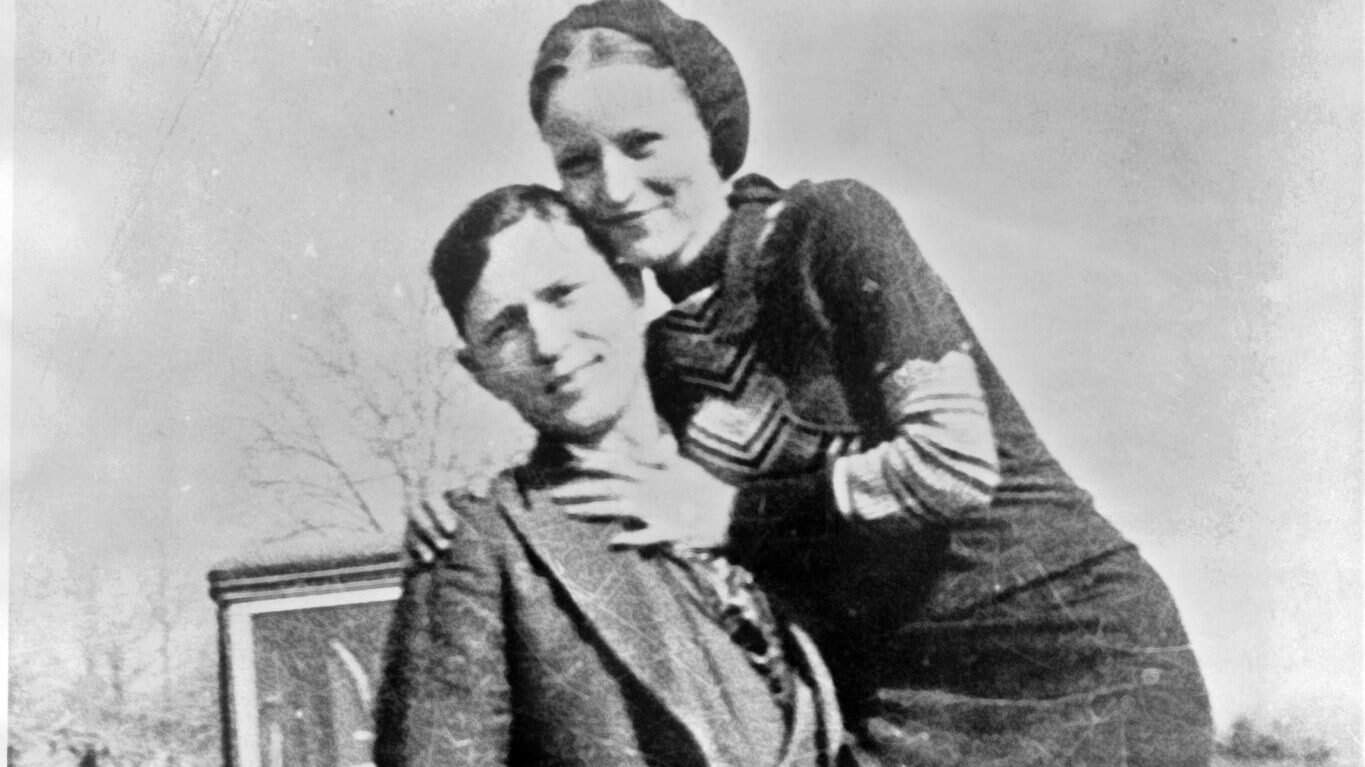An outlaw is a criminal who escapes capture through evasion and violence. In times of old, anyone who forfeited their protection of the law from committing various crimes became an outlaw. This also meant they could be legally captured or killed by anyone.
While many outlaws have existed throughout history, the most notorious lived during a particularly lawless time in both American and Australian history between the years of 1850 and 1940. Feared in their time and romanticized in death, let’s meet a few of history’s most notorious outlaws. (Click here for the most infamous gunfighters of the American West.)
To compile a list of history’s most notorious outlaws, 24/7 Tempo consulted a range of history sites and publications including History Cooperative, History Collection, and the History Channel. From there we selected outlaws that had the widest impact on culture, before verifying biographical information with sites like Biography and Britannica.
Billy the Kid
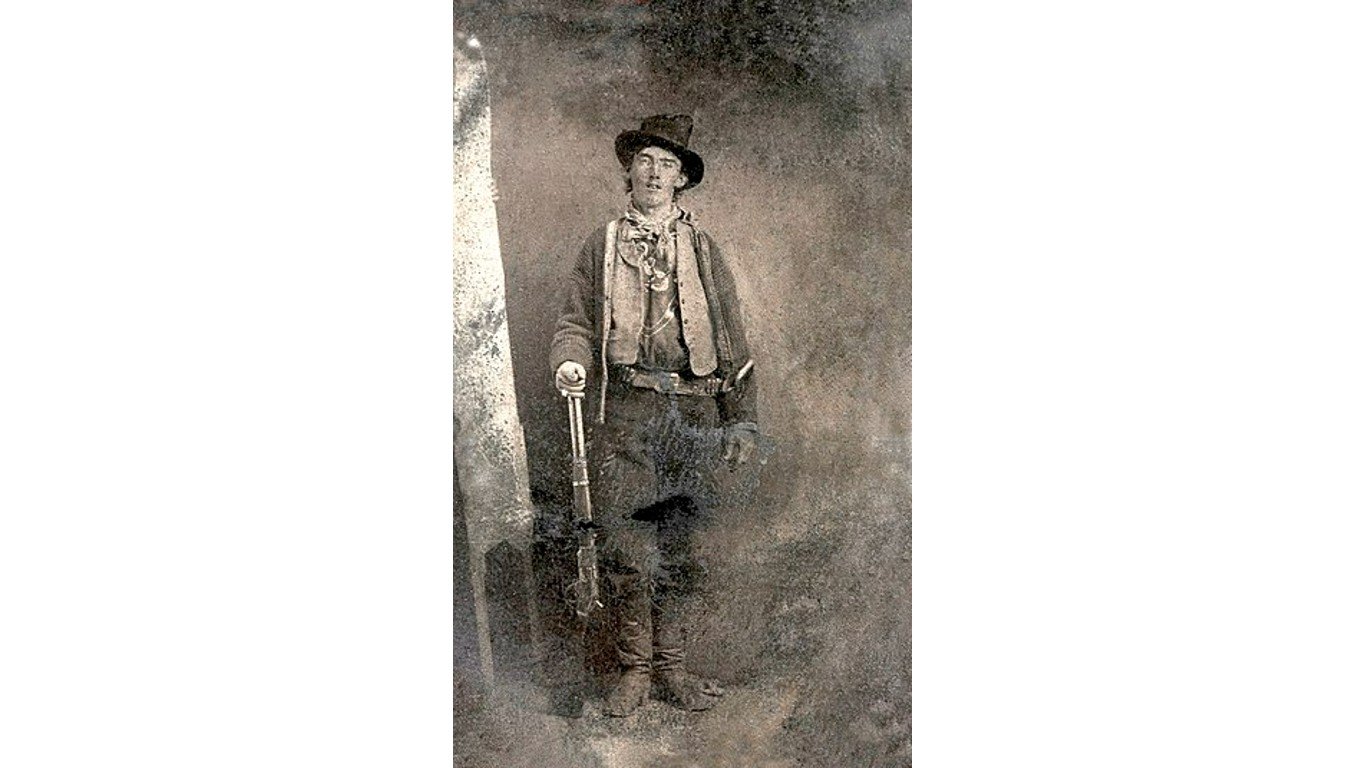
One of history’s most notorious outlaws is Billy the Kid. Born Henry McCarty, and also known as William H. Bonney, Billy the Kid was a gunslinger and outlaw in America’s Old West. Reputed to have killed at least 21 men before his 21st birthday, the Kid started his criminal career when he became an orphan at the age of 15. Arrested not long after for stealing food but escaping, Billy the Kid traversed the New Mexico and Arizona territories, killing men, stealing cattle, and taking part in the Lincoln County War of 1878.
Eventually charged with killing Lincoln County Sheriff William J. Brady and sentenced to hanging, Billy the Kid escaped imprisonment, killing two sheriff’s deputies in the process, and evading capture for two months. Though eventually caught and killed by Sheriff Pat Garrett in July 1881, Billy the Kid’s legend grew.
In the decades that followed, his status took on a mythical quality. Reports spread that he was still alive and many a man took credit for being the true Billy the Kid. These legends helped turn Billy the Kid into one of the most portrayed outlaws in popular culture, having been featured in over 50 movies and television shows.
Jesse James
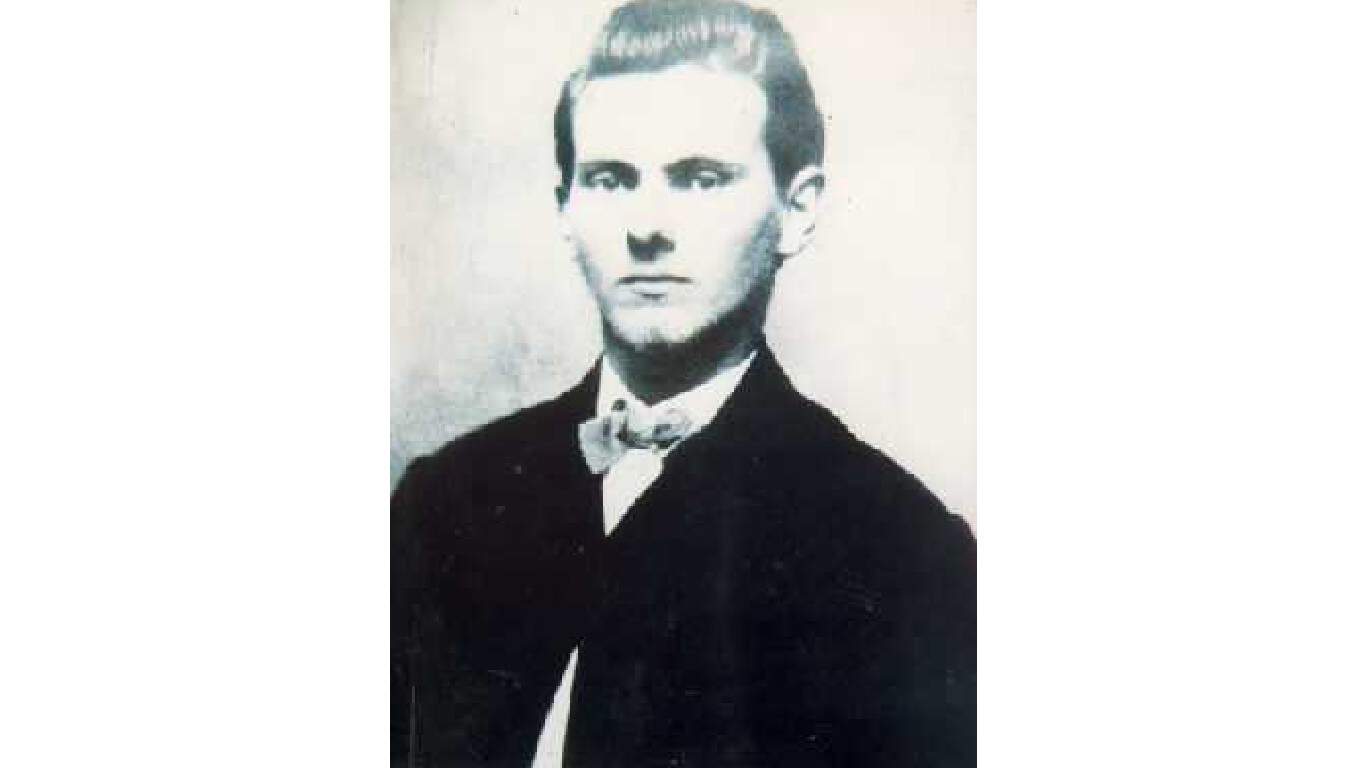
Jesse Woodson James was a bank and train robber, guerilla, and one of history’s most notorious outlaws. Raised in Western Missouri with a strong sympathy for the Confederate cause, James along with his brother Frank got their criminal start as pro-Confederate guerillas called “bushwhackers” in Kansas and Missouri during the tail end of the Civil War. During this time they were accused of committing the Centralia Massacre of 1864.
After the war, James and his brother Frank founded the James–Younger Gang, committing robberies of stagecoaches, banks, and trains. Despite the brutality of their crimes, the legends around Jesse James and his band of followers grew to meteoric heights. In 1876, the gang attempted robbery of a bank in Northfield, Minnesota, which led to the death or capture of several gang members. After this, they laid low due to increasing police pressure while still recruiting new members and committing crimes. In 1882 that all came to an end, however, when recruit Robert Ford murdered Jesse James in hopes of a reward and amnesty for previous crimes.
Though historically, Jesse James was a Southern guerilla inspired by the post-Civil War Confederate insurgencies, his legend as a Robin Hood-type figure grew to epic proportions. One of the most notorious figures from the era, portrayals of Jesse James have been in countless media including novels, movies, and television shows.
Butch Cassidy
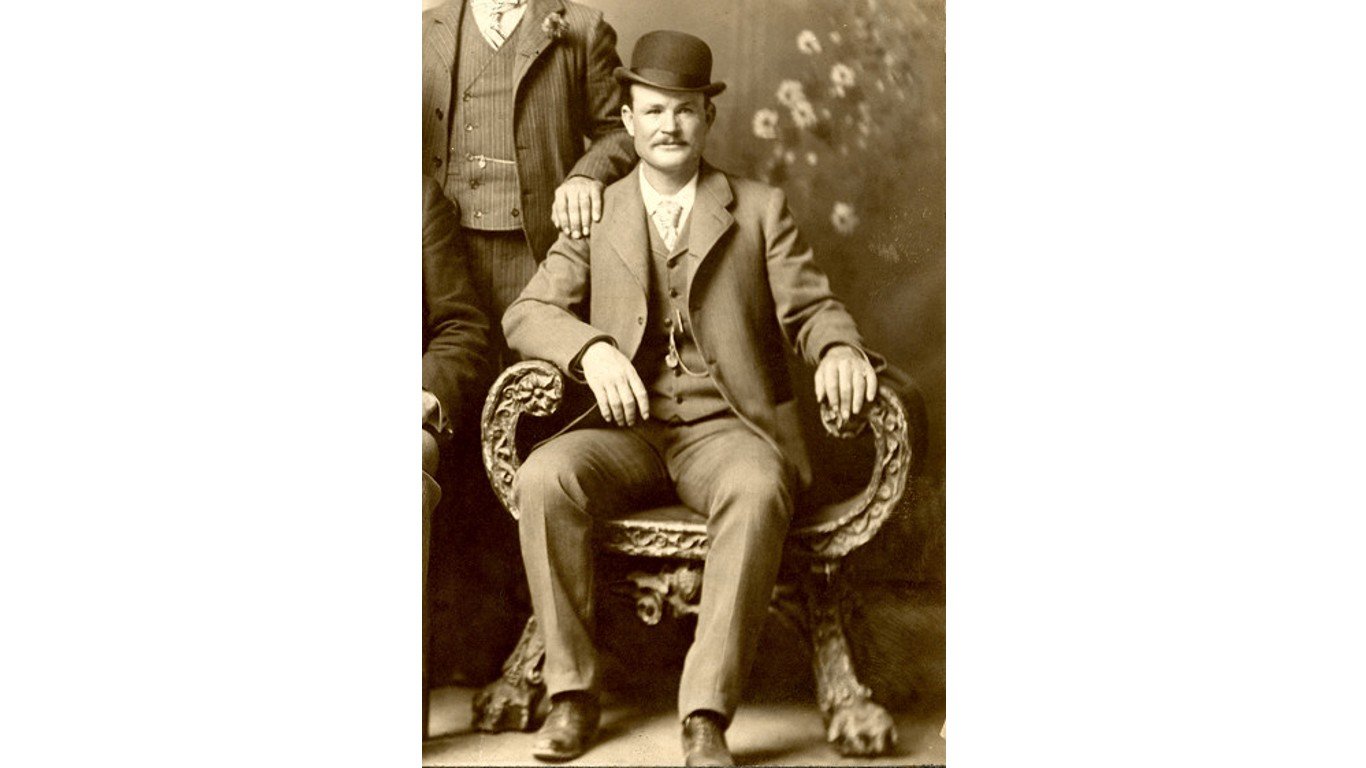
Born Robert LeRoy Parker, Butch Cassidy was a robber and leader of an infamous gang of criminals called the Wild Bunch. Born in Utah territory in 1866, Cassidy left home as a teenager and worked on a dairy ranch. Though his first criminal offense was minor–stealing some clothing–this would blossom into one of the most daring criminal careers in history.
Starting in 1889, Cassidy took to robbing banks. Successful, and already associating with a wide swath of criminals, he started the Wild Bunch with other outlaws like George “Flat Nose” Curry and Ben “The Tall Texan” Kilpatrick. Around this time, Cassidy also recruited Harry Alonzo Longabaugh who later became known as the Sundance Kid. With them, Cassidy would continue robbing banks and trains. However, the daring robbery of the Union Pacific Overland Flyer passenger train brought much notoriety to the gang and resulted in a massive manhunt.
Nevertheless, Cassidy and company continued to rob trains and banks, even approaching the Utah governor to broker amnesty. Though the government was receptive, Cassidy broke any possible deal by continuing to rob trains. Luck would soon run out, however, and increasing manhunts caused Cassidy and the Sundance Kid to escape to New York City before boarding a ship to Buenos Aires, Argentina. From there the story turns into legend, with some reports saying Cassidy and the Sundance Kid were killed in a shootout with Argentinian authorities while others suggested they escaped. This wild story helped catapult Cassidy and the Sundance Kid into popular cultural depictions, most notably, the 1969 movie “Butch Cassidy and the Sundance Kid.”
Ned Kelly
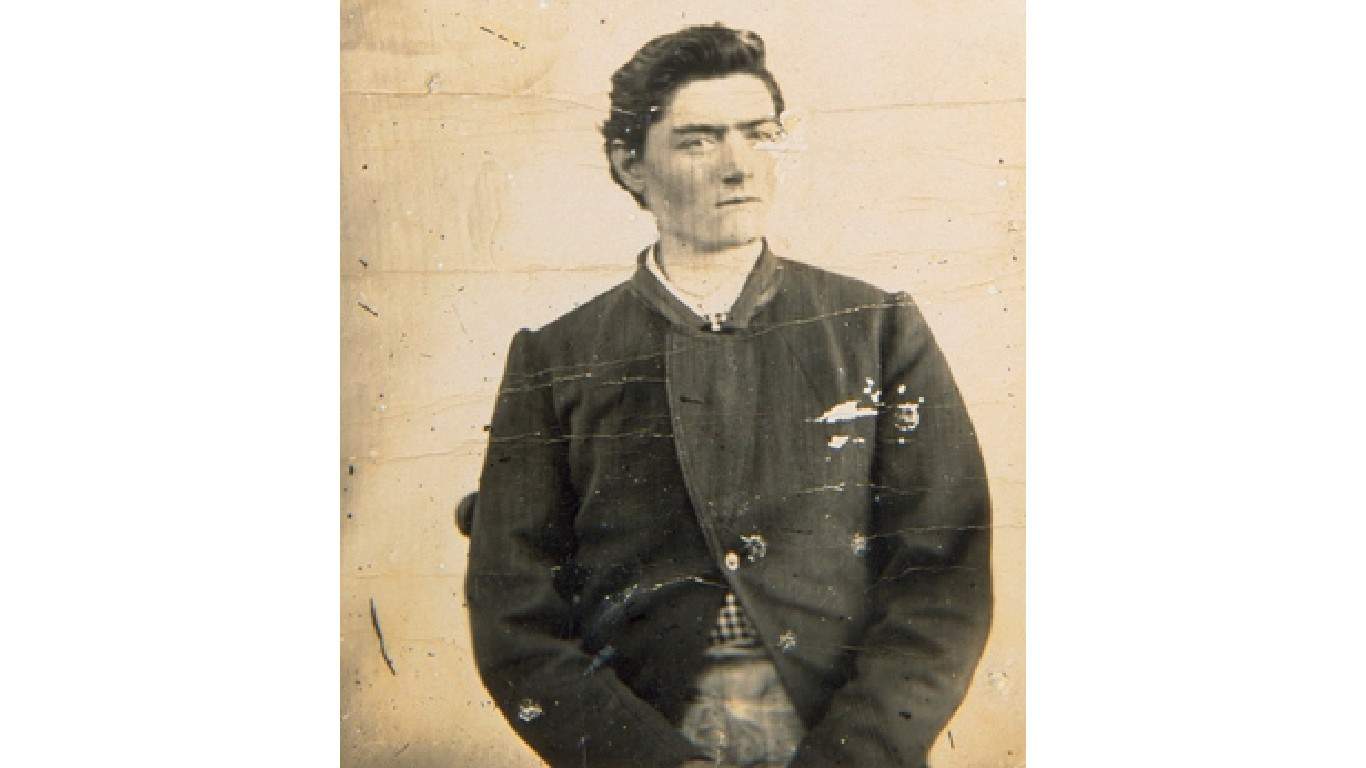
Another one of the most notorious outlaws in history is Australian bushranger, criminal, and gang leader Ned Kelly. Born into a criminal family in the Victoria territory of Australia, Ned Kelly had run-ins with the law starting at an early age. After a violent confrontation at his home in 1878 which left three policemen dead, Kelly fled into the wilderness, hellbent on avenging his imprisoned mother.
Kelly eluded capture for years thanks to sympathy from various criminals as well as poor farmers. During this time, he and others engaged in various robberies and banditry as well as killing police informers. In 1880, Kelly and company staged a failed robbery and ambush of a police train. This led to the gang dressing up in bulletproof armor fashioned from farming machinery before having a final shootout with the cops.
Kelly lived but was quickly arrested, convicted, and sentenced to hanging. Something like the last expression of the frontier outlaw lifestyle, Kelly became a cultural icon in the decades following his death. This led to countless depictions in film and television, as well as more biographies than any other Australian in history.
Sam Bass
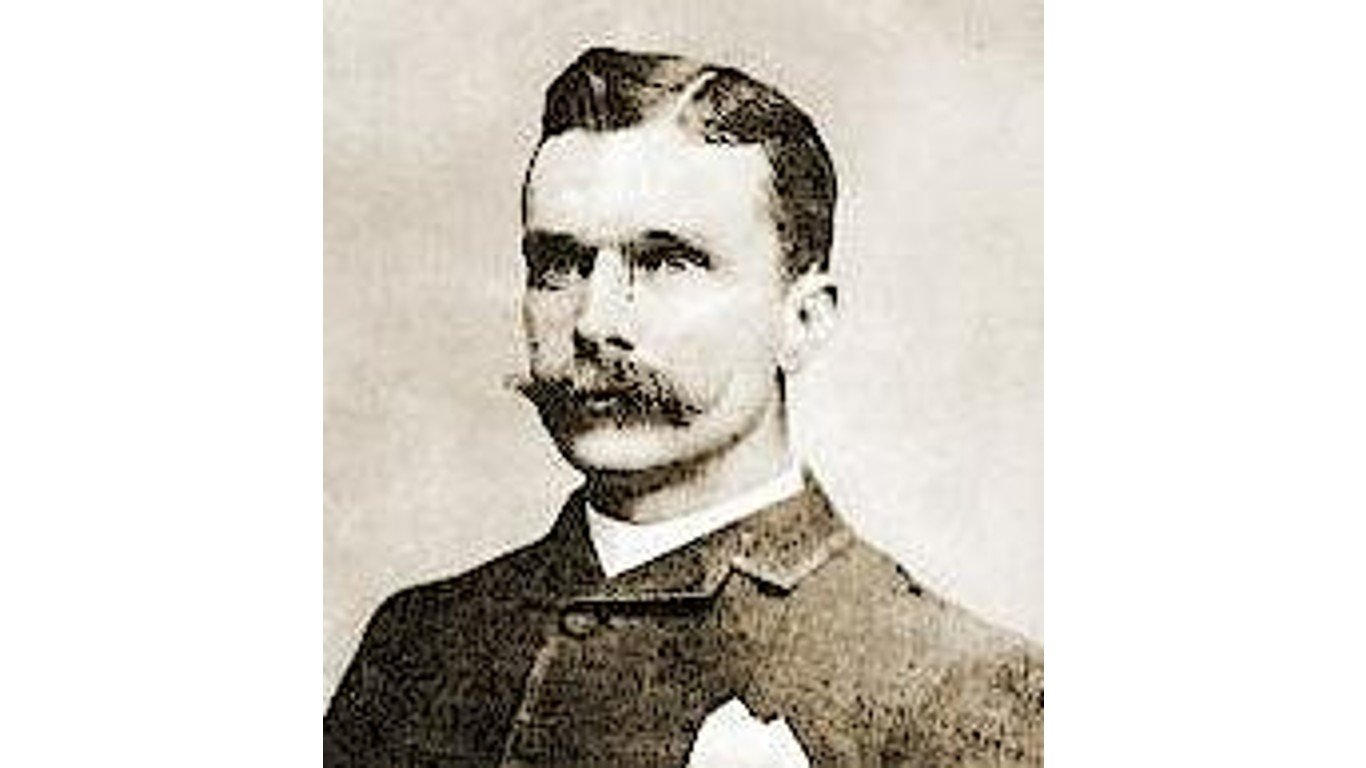
Sam Bass was a train robber and outlaw. Born in Indiana in 1851, Bass became an orphan at an early age. This led to various stints at manual labor jobs around the Midwest including cattle wrangling and driving. After Bass and his partner Joel Collins failed to make money as train freighters, they took to robbing stagecoaches instead.
In 1877, the duo robbed a Union Pacific Railroad gold train, which resulted in a windfall of $60,000, and still stands as the largest train robbery ever committed in the United States. After that, Bass and Collins split up, with Bass traveling to Texas and starting a new gang to rob stagecoaches.
That is, until, gang member Jim Murphy became an informant. The information he gave to authorities led to a confrontation and shootout with Texas Rangers. Though Bass survived the gunfight, he died the next day on his 27th birthday. Since then, Bass has become something of a folk hero in Texas with his story depicted in several films and television shows.
John Wesley Hardin
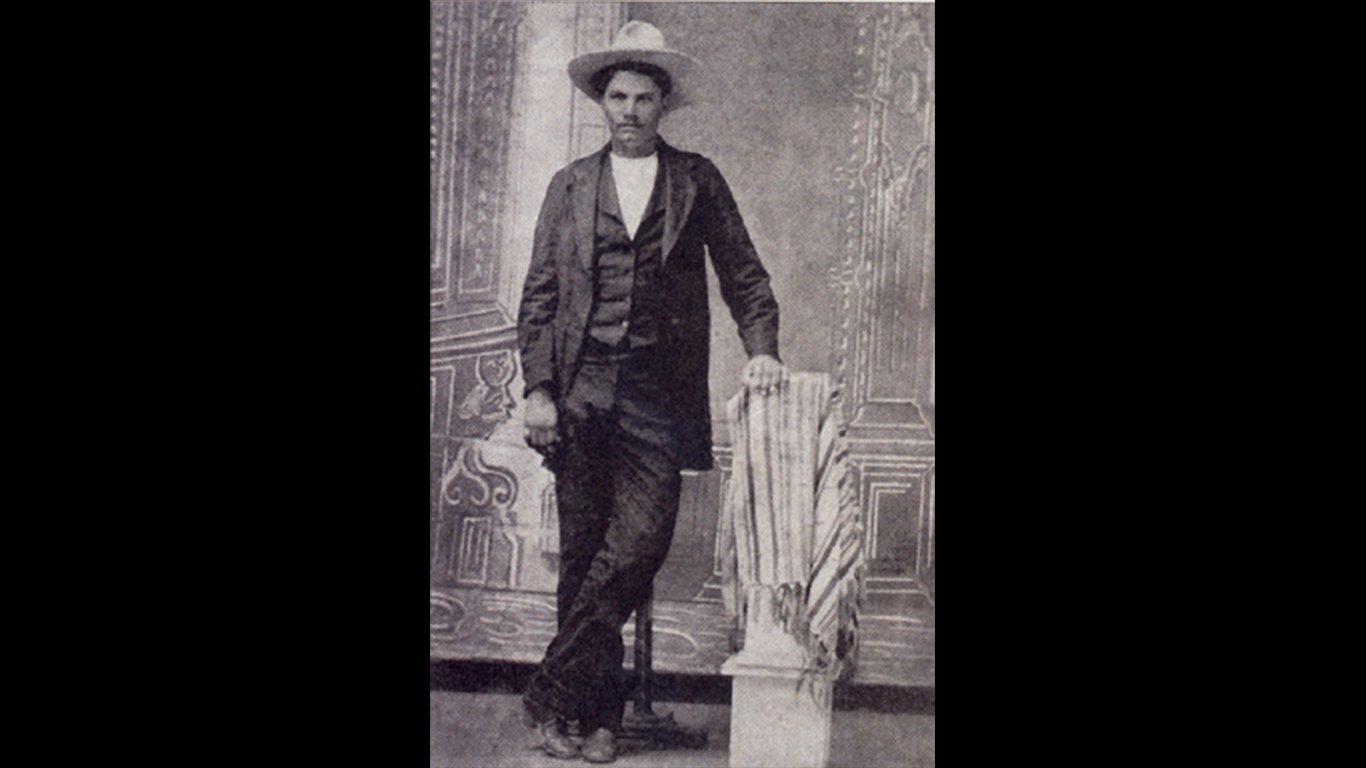
Another one of the most notorious outlaws in history is John Wesley Hardin. Born in Texas, Hardin struggled with authority from an early age. At age 15, he committed his first murder though he later claimed it was self-defense. When police found out, they confronted him, which saw Hardin kill three men before escaping as a fugitive from justice.
From there, Hardin traveled around working various jobs and committing different crimes as well as various murders. Pursued by the law for most of his life, he was eventually caught and imprisoned at the age of 23. A known fabulist, Hardin claimed he killed 42 men by the time of his arrest, though the exact figure is disputed. While in jail, Hardin wrote a biography and gained a reputation for wildly exaggerating stories of his criminal exploits.
For real acts he committed combined with his tall tales, Hardin quickly became a legend of the Old West. This led to several depictions in film and television, as well as gracing the cover and title of the classic Bob Dylan album, “John Wesley Harding.” (For other violent criminals, discover 25 of the most brutal criminals who ever lived.)
Bonnie Parker and Clyde Barrow

Some of history’s most notorious outlaws and perhaps the most famous criminal couple in history were Bonnie Parker and Clyde Barrow. Both were born into poor Texas families, with Parker working as a waitress and seamstress and Barrow running afoul of the law throughout his adolescence.
A chance meeting between the two at a friend’s house led to a “love at first sight” type connection. Soon, the pair began a crime spree that would go down in the annals of American history. Canvasing the Midwest during the Great Depression between the years 1932 and 1934, Bonnie and Clyde robbed banks, general stores, and even funeral homes.
By 1934, however, Barrow had 16 outstanding warrants against him for various robberies and murders. This led to police ambushing the pair in Bienville Parish, Louisiana, and shooting them both to death. Though they killed at least thirteen people throughout their crime spree, Bonnie and Clyde became a public fascination. In the decades following their deaths, the pair were portrayed in countless media. They also became a symbol of forbidden love. (For more contemporary outlaws, click here the most wanted criminals of the 1960s.)
